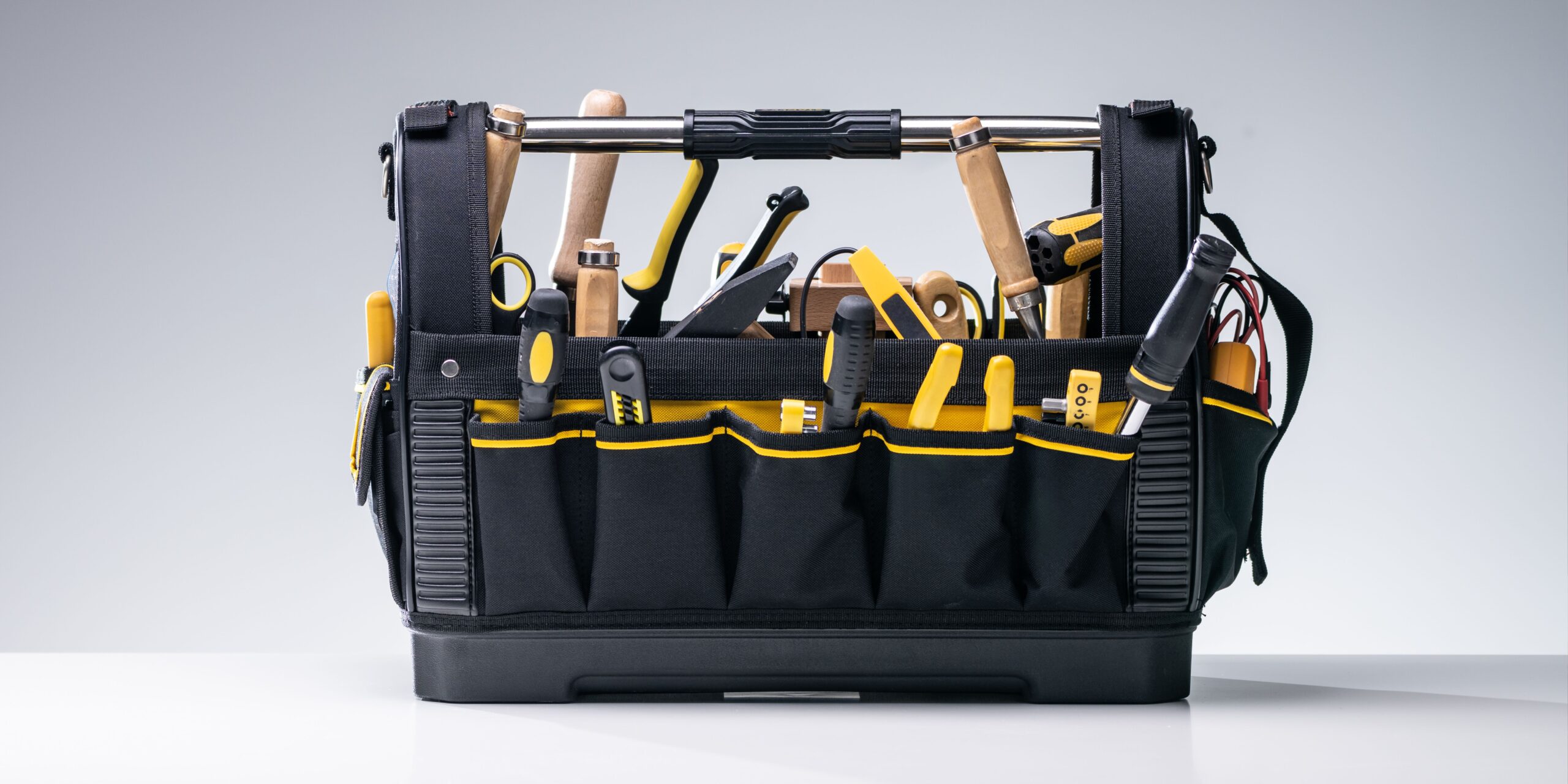
Building a basic home toolkit is a practical step for any DIY handyman. Here’s a step-by-step guide on how to assemble a basic home toolkit:
1. Select a Suitable Toolbox:
- Choose a sturdy and portable toolbox or tool bag to store your tools. Consider one with compartments for organization. A favorite in the handyman world is this Dewalt Tool Bag.
2. Essential Hand Tools:
- Include the following hand tools: Find our recommendations Here.
- Screwdriver Set (Flathead and Phillips)
- Adjustable Wrench
- Claw Hammer
- Tape Measure
- Utility Knife
- Pliers Set (Slip-joint and Needle-nose)
3. Power Tools:
- Start with a basic cordless drill. It’s versatile for drilling holes and driving screws. Ensure it comes with a set of drill bits and screwdriver bits.
4. Level:
- Include a bubble level to ensure your projects are straight and level. This is essential for hanging shelves, pictures, and more.
5. Handsaw:
- A handsaw is useful for cutting wood when a power saw is not needed. Choose a multipurpose handsaw for versatility.
6. Safety Gear:
- Prioritize safety with the following gear:
- Safety Glasses
- Ear Protection
- Work Gloves
- Knee Pads (We recommend the Thunderbolt Platinum Pro knee pads) here is out Review
7. Measuring Tools:
- Apart from the tape measure, consider adding a combination square for accurate measurements and marking.
8. Fasteners:
- Keep a variety of nails, screws, and wall anchors. Having different sizes ensures you’re prepared for various projects.
9. Flashlight:
- A reliable flashlight is essential for working in dark or tight spaces. Our favorite light is a headlamp. The headlamp allows handsfree use while working. A top choice for a headlamp is the Everbeam Headlamp. This lamp is rechargeable but can also run on AAA batteries for convenience.
10. Miscellaneous Tools:
- Include tools like:
- Allen Wrench Set
- Utility Scissors
- Duct Tape
- Assorted Sandpaper
11. Organization:
- Keep your toolkit organized. Use dividers or small containers to separate screws, nails, and other small items. This makes it easier to find what you need.
12. Maintenance:
- Regularly check and maintain your tools. Keep them clean, sharp, and in good working condition.
By following these steps, you’ll have a basic home toolkit that equips you for a variety of DIY projects. As you undertake more projects, you can expand your toolkit with additional specialized tools based on your needs.


